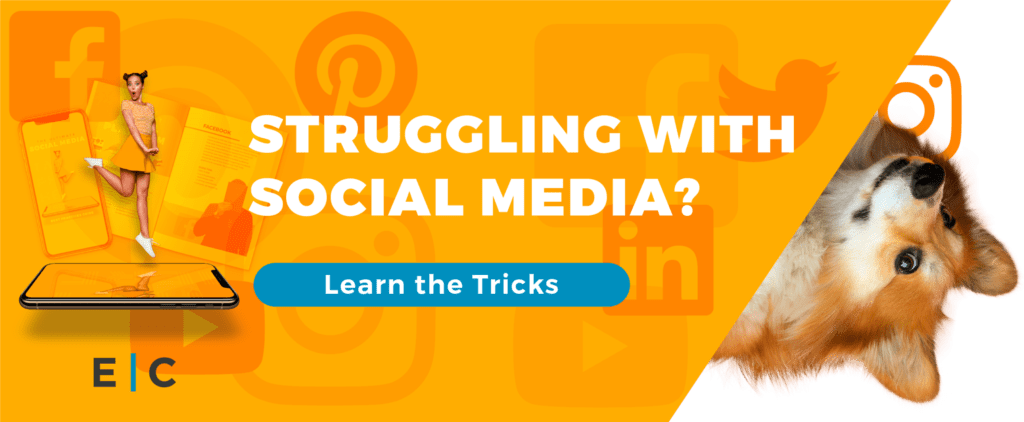What Is Community Management, Exactly?
“Community management” is a term that’s thrown around a lot in the marketing and social media marketing space these days. You’ve maybe included it in a few job descriptions without really sitting down to understand what it means. Answering questions on Instagram? Moderating tweets?
While these are important aspects of any community management strategy, the core of community management goes far beyond and, when executed well, can produce quantifiable benefits to your brand and business. In short, community management helps in attracting and converting new leads into brand advocates that, in the long haul, can reduce costs and efforts better spent on bigger initiatives. That said, there’s one important question to ask yourself…
Do I Have A Community Or An Audience?
Is an audience a community? Well, yes, but also absolutely not. These two words are often used interchangeably in marketing, despite them being two very different groups of people who are part of your brand strategy. Let’s break it down:
An audience consists of those who are engaged by your brand. They’re basically a group of individuals who will listen to you.
A community chooses to engage with you on their own. More than this, however, they elect to engage with other community members as well.
An audience is a one-to-many relationship. Imagine a singer performing to a crowd of people. There is a one-way dialogue happening. Sure, the audience is enthusiastic about being there and is listening intently, but they are not engaging back with the performer. Now imagine a group of that audience taking to online channels to share their concert-going experience with others. They’re answering questions of what the setlist was, they’re posting their photos on social media, they’ve written a short blog about how that concert changed them and how they can’t wait for the next. This group is a community.
So, Why Should You Care About Cultivating A Community?
I understand. All this talk about community and engagement sounds great but at the end of the day, you’re looking for what brings in the dollar and cents, not so much if Susan from North Dakota is getting a sense of belonging in your social media channels. Fortunately, your community management efforts accomplishes two things that are great for any enterprise:
Increase revenue and decrease costs.
How? Let’s hone in on increasing revenue first. One of the ways that an engaged community can boost revenue is by reducing churn and increasing customer retention. Community members that are actively taking a part in your business are far less likely to abandon your brand.
As we know, it is seven times more costly to win over a new customer than to nurture a current one. This leads us to a second benefit, which is an increase in purchasing frequency. These community members who are sticking around and engaging with others are probably going to purchase at a higher frequency than casual, non-community buyers.
As they purchase more, they are likely to become advocates of your brand and effectively champion your business to other, like-minded people without you even needing to further lift a finger! This customer advocacy is far more effective messaging than your own, as potential buyers are much more likely to trust the word of a fellow consumer.
So, we’re making more money with our awesome community, so how are we actively decreasing costs? Well, a strong community management strategy will naturally see call/ticket reflection as queries, qualms, questions, comments, and concerns are being handled on social media, your online forums, and elsewhere by the community! For example, a new customer might have a question on how their recently-purchased headphones connect to Bluetooth. They post their questions in an online forum and are answered by a community member of that headphone manufacturer. Problem solved.
Furthermore, the content being created and shared by your community can also help with long-term SEO, as your business is being mentioned in more and more spaces.
Cool, So How Do I Build A Community?
If you’re starting with an audience and not a community, you’re going to be starting out small, and that’s okay! First, you’ll want to identify the common bonds that will connect your fledgling community. What are their common goals, experiences, and interests? For example, let’s say you’re building a community around your boutique clothing store. A common goal your community may all share with each other is finding high-quality, bespoke pieces of clothing that help them stand out and feel unique. Their shared experiences might include a disdain for large shopping centers and a desire to shop and try on clothes in-person rather than online.
You’ll also want to try and identify your communities early on and create segments for them. Namely, your Aware & Engage communities and your Excite & Ascend communities. Aware & Engage are typically those just becoming cognizant of your brand. They’re asking lots of questions and creating content about their first experiences.
Excite & Ascend communities are your most loyal. They’ve been around for a while now and are the ones answering questions, hyping up your product launches, posting reviews, and making recommendations. They’re also always looking for ways to become better or more proficient with their purchase and look forward to content that may offer a fresh new way to interact with that purchase. Over time, you’ll want to transition the Aware & Engage community into that top-tier Excite & Ascend!
Thoughtful community management is no small feat, but keep at it and sure enough, you’ll start to see your community begin to grow and thrive!
-FINAL(01-00)-White&Blue-01.svg)





